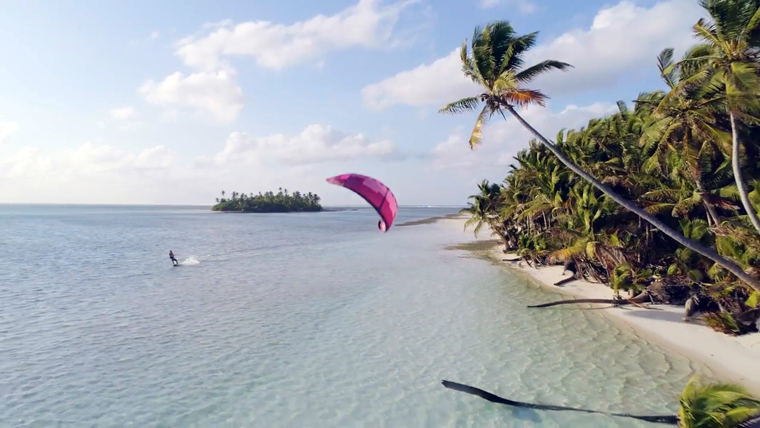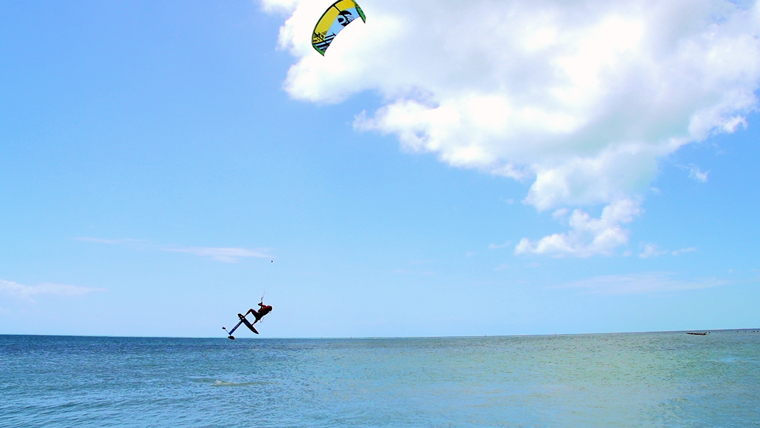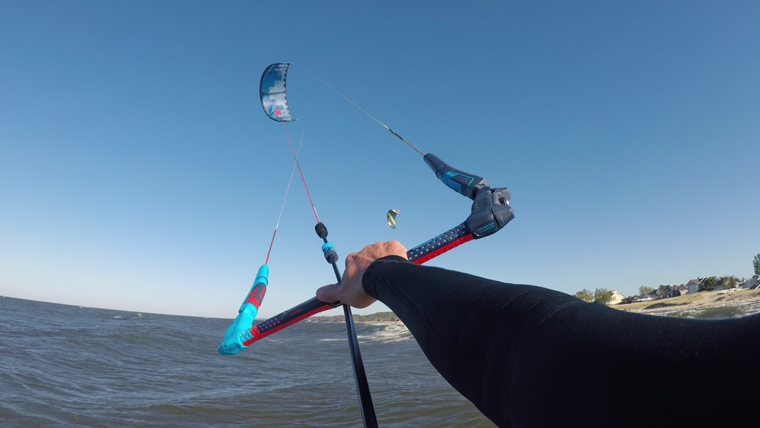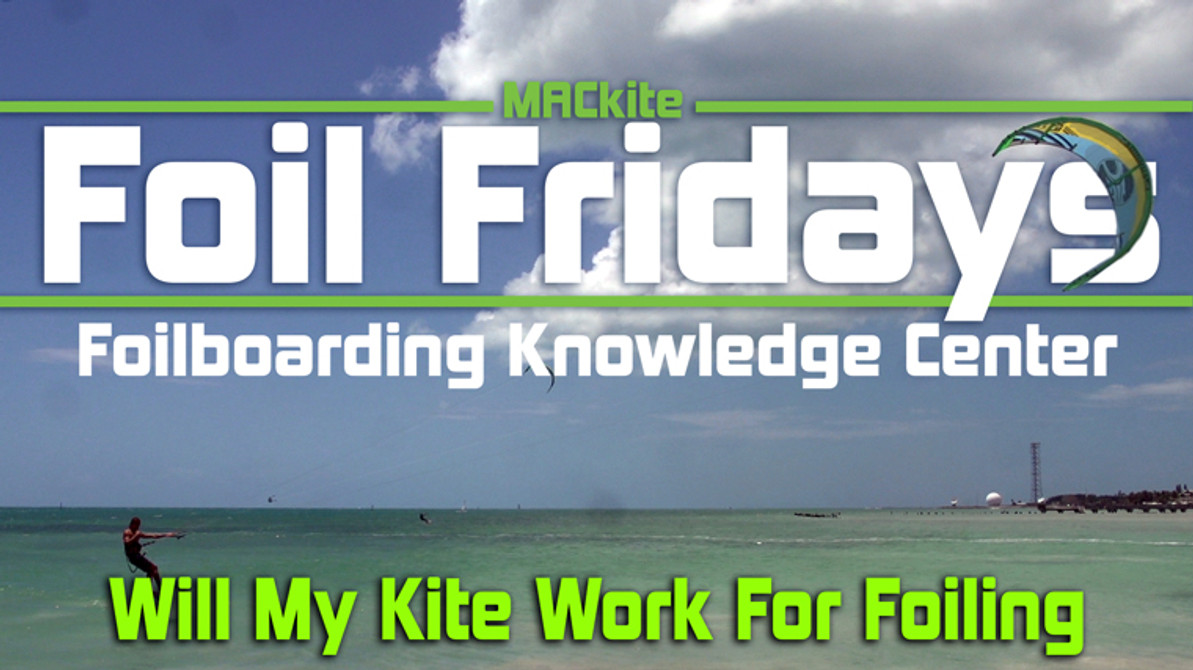How will my kite work for foilboarding?
Foilboarding is the newest and fastest growing aspect of kiteboarding, without question. The rapid advance of riding styles and equipment is a hard thing to keep pace with. As a result, we get a lot of questions. Since most of the people getting into kiteboard foiling are already kiteboarders, a popular question is, “How will my kite(s) work for foiling?”; A legitimate question! The kite you have/choose will have certain advantages and disadvantages for your riding and styles of foiling. To keep this simple, lets break kites down into their respective categories, since those categories will have similar designs. The majority of kites on the market can be broken down into Freeride, Freestyle, Wave, and Ram Air foils.
Freeride kites
The most popular type of kites are freeride kites.
They provide a wide wind range, pull and go power, boosty jumps, sweeping turns, upwind efficiency, and good power for their size
They tend to ride in most conditions and disciplines well to an intermediate level - and foilboarding is no exception. These kites work well in winds as low as 12 knots but may become hard to fly or sluggish in less, due to their weight.
The exception to this would be single strut kites. Single struts tend to fall into the freeride category but can fly in less wind due to their lightweight construction. Freeride kites have low-end power which will make learning easier. They boardstart well when underpowered but may become easily overpowered when riding on foil.
Because of this, we recommend jumping down 2-3m in kite size, compared to what you would ride with a twintip in that same situation. This also means that re-positioning the kite can result in powerful bursts and excessive board speed due to their punchy nature.

The North Evo is the perfect example of a well rounded freeride kite.
What to consider on a freeride kite
Their upwind ability, combined with the efficiency of the foil, will result in a highly capable upwind combination. However, downwind riding will require more tact and a lesser downwind angle to ensure the control lines remain taught. If you are a rider who intends on riding powered and doing large jumps, these kites can be ideal. Their firm structure allows them to stay rigid in messy or overpowered conditions.
Their jumps are large and lofty so you can boost higher and have more time to enjoy the view before touching down. Just don’t forget to angle those foil wings downward upon re-entry to reduce the stress on the foil.
Examples of Freeride kites
Here are some examples of freeride kites. If you're using one of these, have fun! They are not necessarily foil specific but they will absolutely work.
- Airush Lithium
- Airush Ultra
- Cabrinha Apollo
- Cabrinha Switchblade
- Cabrinha Contra
- Liquid Force NV
- Liquid Force Solo
- Naish Pivot
- Naish Boxer
- North Evo
- North Mono
- North Juice
- North Rebel
- Slingshot Rally
- Slingshot Turbine
Freestyle kites
Arguably, the most similar style of kites to freeride kites, are freestyle kites. Freestyle kites have moved predominantly from a C-based platform to a Hybrid design. This gives them more ease of use, wind range, relaunch, and everyman performance. Freestyle kites have decent wind range, powerful loops, excellent unhooked pop, and slack for handlepass tricks. Most of these characteristics are the polar opposite of what is ideal for kite foilboarding. However, that does not mean that the kite is bad for foiling...it is just not ideal.
Our team rider Blake Olsen has been foiling primarily on the Cabrinha FX and he's progressed to an insane level in one short year.

Blake throwing a front roll while foilboarding on his 2017 Cabrinha FX.
What to consider on a freestyle kite
Like freeride kites, they too will not fly well in light winds and will require more babysitting to move downwind. Again like freeride kites, they are not terrible to ride with a foil in the bottom of their wind range. They can be too punchy or overpowered easily in the upper end of their range.
For jumping they can be quite exciting but will leave you falling from the sky quickly if you do not give the kite hard input upon re-entry. As a result, most jumpers will prefer the freeride kites for airs and airstyle tricks.
Examples of Freestyle kites
If you're using any of these kites, you'll be just fine on a foilboard. Again, they aren't the first choice but they will get the job done.
- Airush Union
- Cabrinha FX
- Naish Dash
- North Dice
- Slingshot RPM
Wave kites
If you want a short and simple answer, they are regarded as the best kite choice for kiteboard foiling. They offer downwind drift, fast turning speed, and smooth power delivery that make them the easiest and most capable sail for your foiling experience. Racers or jumpers may require more power, efficiency, and lift; such as a freeride or ram air race kite.
We have discussed the use of wave kites at length in our previous video/article, “5 best kites for Foiling”. Here is that excerpt…
Benefit one
Surf kites are the most popular kite choice for foilboarding for many reasons. The first and most notable, is their purpose built “downwind drift”. Downwind drift is best described as the ability of the kite to fall downwind when the control lines are not loaded. This results in a slight kite pull when traveling downwind. Also, riders notice the ability to steer without kite power, as well as not falling out of the sky when moving downwind quickly.
Since kitesurfers and foilers frequently move downwind fast, downwind drift allows riding to be simple and free. Their tendency to sit further down in the wind window also makes them easier to stay aloft in light or gusty winds. One downside to downwind drift is its diminished upwind and jumping ability. Luckily, foilboards and surfboards ride upwind well so it is a non-issue in most instances.
Benefit two
A second benefit to surf kites for hydrofoiling is their turning speed. Like kitesurfing, hydrofoil kiteboarding requires fast changes in kite direction. This accounts for bursts of speed and direction changes that the foil allows. Experienced foilers often find themselves signing, looping, and streaking the kite across the window in the same tack. The faster you can adjust your kite, the more aggressive and free your board becomes. It is important to note that the turning speed allows riders with some experience to ride smaller kites since they can create quick bursts of power on demand when needed.
Benefit three
A third benefit is how surf kites deliver power. Surf kites tend to have the smoothest power delivery of any kites on the market. This is due to the fact that they are predominantly designed for kite surfers who ride strapless. A jolty or punchy kite can pull a strapless rider off their board or reposition their feet. Conversely, a smooth power delivery for kitesurfing or kite hydrofoiling gives the rider confidence when riding and allows more aggressive kite movements without the fear of getting yarded. This is especially important with hydrofoils, as more balance is required, and burst of power can speed up the hyper efficient craft.
Shop picks
Two popular kitesurf kite choices for foiling are the Cabrinha Drifter and the North Neo. The Drifter and Neo both display the characteristics mentioned but also have differences that suit different types of riders. The Drifter, as its name would state, is hands down the best downwind drifting kite on the market. This year, the Drifter has an expanded power range when in it's offshore bridle orientation, for better upwind and jumping ability. The Neo does not dirft downwind as well as the Drifter but still drifts downwind better than other kites on the market.
The Neo is more powerful than the Drifter and riders will often choose to drop a meter or two in size. This allows the rider to avoid being overpowered with the apparent wind created by the foil’s efficiency. The Drifter and Neo are both excellent kites but are often chosen by different riders.

Typically, freeriders with a loose style will choose the Drifter while riders who prefer a more “punchy” feeling kite will choose the Neo. Other kites such as the Naish Slash, Airush Wave, Slingshot Wave SST, and Liquid Force WOW are also popular choices. We'll dive into these in later videos.
Other excellent choices in the surf category
- Airush Wave
- Cabrinha Drifter
- Liquid Force Wow
- Naish Slash
- North Neo
- Slingshot Wave SST
Ram air foil kites
Our third and final category for foil friendly kites are Ram Air foil kites. Ram air foil kites are popular choices for lightwind riders, as well as racers. These kites can be difficult to fly but provide a super light wing that stays aloft in the lightest of winds. Our shop riders prefer them in winds 4-10 knots. Racers like these ram air foil kites because their dual foil design maximizes the wing’s efficiency.
We discuss the use of ram air kites at length in our previous video/article, “5 best kites for Foiling”.
Typical kiteboarding kites are LEI, or leading edge inflatable design. Rather than pumping up a bladder, the Ram Air kite design includes a dual canopy design with “cells” between that fill with air using the wind. This kite has a lighter weight design, as well as a “foil” curve along both the inside and outside of the wing. This results in a more efficient design. These Ram Air foil kites require more bridles to help support the wing and hold its shape.
As a general rule, we ride Ram Air foils only in the lightest of winds, when other kites will not stay aloft. For most of us, this includes winds at 4-8 knots paired with a 12-18m kite. Most Ram Air kites are very high aspect. As a result, they are difficult to fly and have the unfortunate tendency to "bowtie" or fold when they lose adequate line tension; a common occurrence in light winds with variable gusts.
A popular choice among snowkiters and now foilboarders: Ram air foil kites are here to stay.
Our Choice Ram Air kite
A kite we love for super lightwind sessions is the HQ4 Matrixx. The larger sizes of this kite are built with extra lightweight materials and have a weight that is 1/3 of similar sized, leading edge kites. In addition to being lightweight, the Matrixx Ram Air foil kite has a low aspect design that is designed and optimized for foiling. This means that the kite sits further back in the window and has more kite stability and improved downwind riding abilities. Also, the Matrixx can be flown using most four line bars on the market. That will save you a smooth $400-550 on a dedicated foil bar that most Ram Air foils need. To put it simply, the HQ4 Matrixx provides superior foiling performance and ease of use, all at a price that puts the competition to shame.
Others include:
- Liquid Force Elite
- Slingshot Phantom
- North Ace
The Take Away
Simply put, if you have a kite and you want to foil, get out there and use it! If you're in the market for a foil specific kite, some choices are better than others.
If you have questions about how your specific kite will work for foiling or what size kite may be most appropriate for your situation, feel free to reach out via 800.622.4655, live chat, or email at Kiteboarder@mackite.com

Tucker Vantol
MACkite's resident surf and "Foilboarding junkie." You can either catch him on the phones or on the water at dawn testing new gear. he is proficient at a myriad of sports, a shaper and passionate about getting his water time. When he discover kiteboarding it took over as his predominate sport. The same could be said about hydrofoiling.
Recent Posts
-
Kiteboarding | Crafting the Harlem Force Kite with Sustainability and Performance
Unparalleled Performance Meets Unmatched Sustainability The kiteboarding industry is on …24th Apr 2024 -
Duotone Ventis 2025 | What's New?
If you're familiar with Duotone's Ventis, you know its specialty is freeriding in light wind …23rd Apr 2024 -
Duotone Ventis D/LAB 2025 Overview
If you ride in an area with multiple light wind days and need a wing that'll let you get o …23rd Apr 2024




